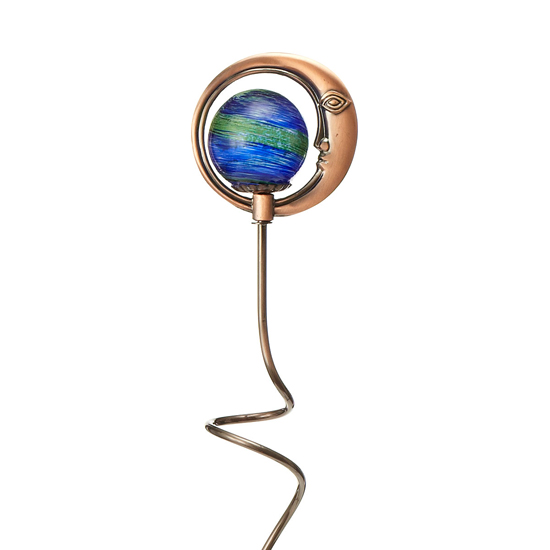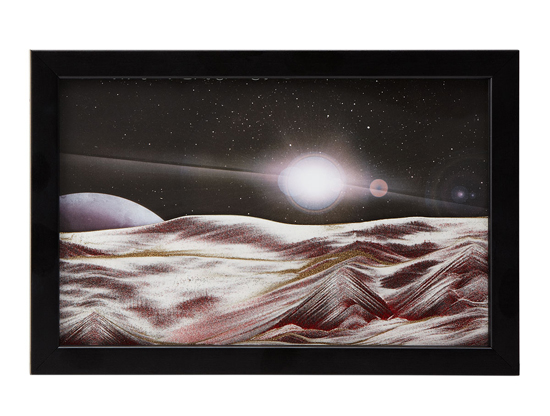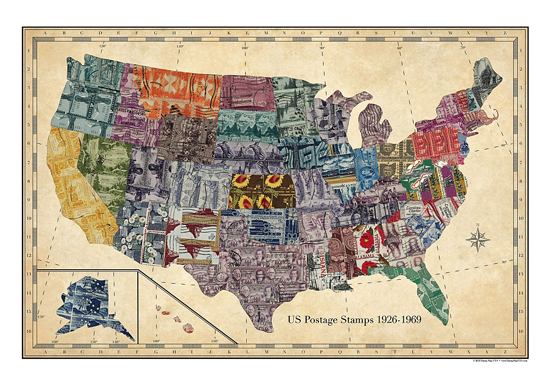 Technically, yes. Unlike a substance like water that changes from a liquid to a solid when frozen, glass develops no crystalline structure to maintain a rigid structure. For decades, science textbooks have supported this fact by pointing to the windows of medieval churches. Those window panes are often thicker at the bottom, and popular wisdom was that they had “flowed” downward at a very slow rate. In the late 1990s, however, some scientists decided to actually test that theory. They confirmed that, yes, glass would in fact exhibit some flow over time, but that it would take at least 10 million years for any visible change to occur in those window panes. It turns out that the sagging medieval glass, from mere hundreds of years ago, is only evidence of the period’s primitive glassmaking techniques.
Technically, yes. Unlike a substance like water that changes from a liquid to a solid when frozen, glass develops no crystalline structure to maintain a rigid structure. For decades, science textbooks have supported this fact by pointing to the windows of medieval churches. Those window panes are often thicker at the bottom, and popular wisdom was that they had “flowed” downward at a very slow rate. In the late 1990s, however, some scientists decided to actually test that theory. They confirmed that, yes, glass would in fact exhibit some flow over time, but that it would take at least 10 million years for any visible change to occur in those window panes. It turns out that the sagging medieval glass, from mere hundreds of years ago, is only evidence of the period’s primitive glassmaking techniques.
 There’s a man in the moon because you put him there. Specifically, part of your brain put him there. Dr. Doris Tsao, a neuroscientist from Germany, was doing research on stroke victims and discovered that some patients were able to recognize and identify any object except for faces. This suggested to her that facial recognition may occur in a very specific part of the brain. Testing showed her theory to be true, and further research has created a list of twelve visual attributes that cause these facial-related parts of the brain to activate. The hitch is that, if any object exhibits enough of these characteristics, our brains automatically identify a face even where none actually exists. Thus, we tend to see faces staring back at us from electrical outlets, grilled cheese sandwiches, or even the craters of the moon.
There’s a man in the moon because you put him there. Specifically, part of your brain put him there. Dr. Doris Tsao, a neuroscientist from Germany, was doing research on stroke victims and discovered that some patients were able to recognize and identify any object except for faces. This suggested to her that facial recognition may occur in a very specific part of the brain. Testing showed her theory to be true, and further research has created a list of twelve visual attributes that cause these facial-related parts of the brain to activate. The hitch is that, if any object exhibits enough of these characteristics, our brains automatically identify a face even where none actually exists. Thus, we tend to see faces staring back at us from electrical outlets, grilled cheese sandwiches, or even the craters of the moon.
 This question is not as simple as it may seem. The smarty-pants out there will quickly state that the tomato is a fruit. Botanically speaking, fruits are classified as the seed-bearing part of a flowering plant, a description which includes not only tomatoes, but also such produce as cucumbers, eggplants and pumpkins. But because they are not sweet, such foods are still also considered to be vegetables when it comes to food preparation. The distinction is surprisingly important, because it turns out that fruits and vegetables have different legal implications. So important, in fact, that the U.S. Supreme Court once had to step in and make the call. In 1893, in the case of Nix v. Hedden, the Court ruled that, when it comes to taxes and tariffs, the tomato is legally a vegetable.
This question is not as simple as it may seem. The smarty-pants out there will quickly state that the tomato is a fruit. Botanically speaking, fruits are classified as the seed-bearing part of a flowering plant, a description which includes not only tomatoes, but also such produce as cucumbers, eggplants and pumpkins. But because they are not sweet, such foods are still also considered to be vegetables when it comes to food preparation. The distinction is surprisingly important, because it turns out that fruits and vegetables have different legal implications. So important, in fact, that the U.S. Supreme Court once had to step in and make the call. In 1893, in the case of Nix v. Hedden, the Court ruled that, when it comes to taxes and tariffs, the tomato is legally a vegetable.
 That cute, fluffy-wuffy little kitty cat nuzzling up against your leg right now is actually a vicious predator. Like its lion and tiger cousins, it requires periodic bursts of heightened speed and focus in order to catch its prey, whether that’s a gazelle or your sock. In order to preserve their energy, cats spend much of their time dozing, often sleeping only lightly, in order to be able to leap back into action at a moment’s notice. An individual cat nap typically lasts for 15 to 30 minutes, but add them all together and your cat is getting some serious down time: they sleep an average of 12-16 hours every day, with some even sleeping up to 20 hours in a single 24-hour period!
That cute, fluffy-wuffy little kitty cat nuzzling up against your leg right now is actually a vicious predator. Like its lion and tiger cousins, it requires periodic bursts of heightened speed and focus in order to catch its prey, whether that’s a gazelle or your sock. In order to preserve their energy, cats spend much of their time dozing, often sleeping only lightly, in order to be able to leap back into action at a moment’s notice. An individual cat nap typically lasts for 15 to 30 minutes, but add them all together and your cat is getting some serious down time: they sleep an average of 12-16 hours every day, with some even sleeping up to 20 hours in a single 24-hour period!
 While some of us are still recovering from Pluto’s removal from the planetary roster of our solar system, there may still be another dark horse contender out there for the designation of 9th Planet. Pluto, which is actually much smaller than Earth’s moon, is just one of several “dwarf planets” that circle the earth in a ring of asteroids and space debris known as the Kuiper Belt. But recently, as astronomers have observed the Kuiper Belt, they have found that its objects are not all orbiting in regular patterns. What’s throwing them off course? One possibility is the gravitational pull of an undiscovered planet, perhaps even four times as large as the Earth. Unfortunately, orbiting so far away from the sun means that it would reflect very little light, making it nearly impossible to find even with advanced equipment.
While some of us are still recovering from Pluto’s removal from the planetary roster of our solar system, there may still be another dark horse contender out there for the designation of 9th Planet. Pluto, which is actually much smaller than Earth’s moon, is just one of several “dwarf planets” that circle the earth in a ring of asteroids and space debris known as the Kuiper Belt. But recently, as astronomers have observed the Kuiper Belt, they have found that its objects are not all orbiting in regular patterns. What’s throwing them off course? One possibility is the gravitational pull of an undiscovered planet, perhaps even four times as large as the Earth. Unfortunately, orbiting so far away from the sun means that it would reflect very little light, making it nearly impossible to find even with advanced equipment.
 If Thomas Jefferson had had his way, you might be. In 1787, the newly-formed government of the United States passed an ordinance claiming the land south of the Great Lakes as American soil. Called the Northwest Territory, this act established the pattern by which the government would expand its borders westward: by creating new states rather than by expanding existing ones. Thomas Jefferson was one of the early proponents of this plan. The author of the Declaration of Independence turned his pen to the map of this new frontier, drew straight lines dividing the area into seventeen proposed states, and invented names for them all using a combination of Latin and Native American words. Some of those names, like Illinoia and Michigania, were adapted into official usage. Others, however, would have given an entirely different flavor to the American landscape. Can you imagine hailing from the great states of Metropotamia, Equitasia, Chersonesus, Assenisipia?
If Thomas Jefferson had had his way, you might be. In 1787, the newly-formed government of the United States passed an ordinance claiming the land south of the Great Lakes as American soil. Called the Northwest Territory, this act established the pattern by which the government would expand its borders westward: by creating new states rather than by expanding existing ones. Thomas Jefferson was one of the early proponents of this plan. The author of the Declaration of Independence turned his pen to the map of this new frontier, drew straight lines dividing the area into seventeen proposed states, and invented names for them all using a combination of Latin and Native American words. Some of those names, like Illinoia and Michigania, were adapted into official usage. Others, however, would have given an entirely different flavor to the American landscape. Can you imagine hailing from the great states of Metropotamia, Equitasia, Chersonesus, Assenisipia?
 It’s considered common knowledge now that no two people are exactly alike, and that those differences are coded right into our DNA. You may be surprised to learn, however, that all of those differences between us only appear in only 1% of our DNA. That means that in 99% of our genetic makeup, the entire human race is exactly alike. If it seems impossible that just 1% could account for the variety found among earth’s population: 97% of our DNA is exactly the same as that of an orangutan!
It’s considered common knowledge now that no two people are exactly alike, and that those differences are coded right into our DNA. You may be surprised to learn, however, that all of those differences between us only appear in only 1% of our DNA. That means that in 99% of our genetic makeup, the entire human race is exactly alike. If it seems impossible that just 1% could account for the variety found among earth’s population: 97% of our DNA is exactly the same as that of an orangutan!
 Though it can be assumed that horses certainly like peanut butter, don’t expect your steed to state his preference for smooth or chunky any time soon. Despite an incredibly sticky rumor, everyone’s favorite “talking” horse, Mr. Ed, learned to speak not because he was fed the stick-to-the-roof-of-your-mouth food, but through good, old-fashioned training. The PB rumor was perpetuated by Wilbur himself, Alan Young, who feared that children wouldn’t find Mr. Ed’s real, animal actor training as charming as the idea of sharing their favorite snack with him. Though at first his handlers would jiggle his lips with a piece of thread, Mr. Ed (being the professional pony he was) soon learned to move his lips independently at the touch of his hoof, and eventually, whenever his human co-actors stopped talking!
Though it can be assumed that horses certainly like peanut butter, don’t expect your steed to state his preference for smooth or chunky any time soon. Despite an incredibly sticky rumor, everyone’s favorite “talking” horse, Mr. Ed, learned to speak not because he was fed the stick-to-the-roof-of-your-mouth food, but through good, old-fashioned training. The PB rumor was perpetuated by Wilbur himself, Alan Young, who feared that children wouldn’t find Mr. Ed’s real, animal actor training as charming as the idea of sharing their favorite snack with him. Though at first his handlers would jiggle his lips with a piece of thread, Mr. Ed (being the professional pony he was) soon learned to move his lips independently at the touch of his hoof, and eventually, whenever his human co-actors stopped talking!
